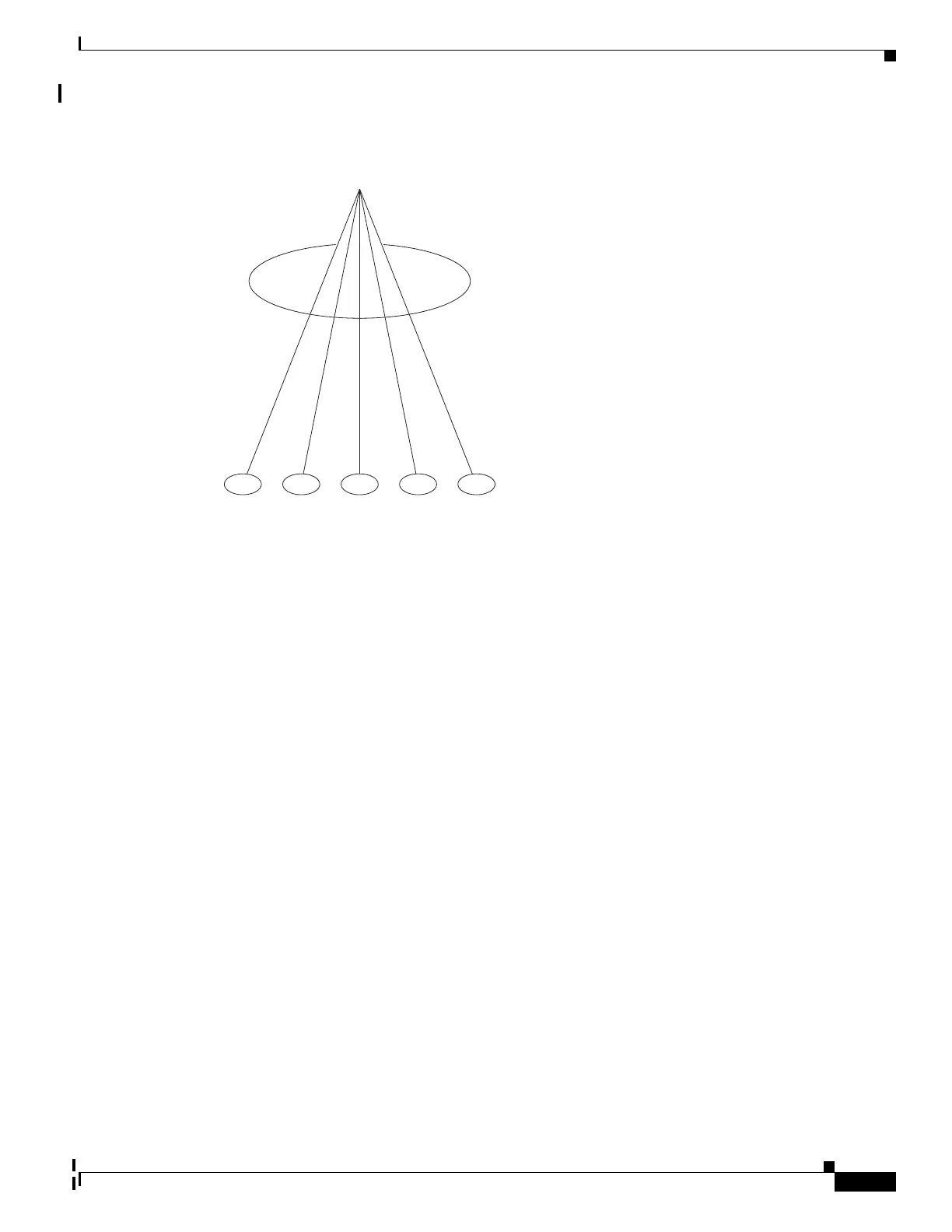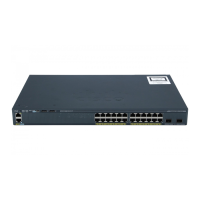38-5
Catalyst 2960 and 2960-S Switches Software Configuration Guide, Release 15.0(1)SE
OL-26520-01
Chapter 38 Configuring EtherChannels and Link-State Tracking
Understanding EtherChannels
Figure 38-4 Relationship of Physical Ports, Logical Port Channels, and Channel Groups
After you configure an EtherChannel, configuration changes applied to the port-channel interface apply
to all the physical ports assigned to the port-channel interface. Configuration changes applied to the
physical port affect only the port where you apply the configuration. To change the parameters of all
ports in an EtherChannel, apply configuration commands to the port-channel interface, for example,
spanning-tree commands or commands to configure a Layer 2 EtherChannel as a trunk.
Port Aggregation Protocol
The Port Aggregation Protocol (PAgP) is a Cisco-proprietary protocol that can be run only on Cisco
switches and on those switches licensed by vendors to support PAgP. PAgP facilitates the automatic
creation of EtherChannels by exchanging PAgP packets between Ethernet ports.
By using PAgP, the switch learns the identity of partners capable of supporting PAgP and the capabilities
of each port. It then dynamically groups similarly configured ports into a single logical link (channel or
aggregate port). Similarly configured ports are grouped based on hardware, administrative, and port
parameter constraints. For example, PAgP groups the ports with the same speed, duplex mode, native
VLAN, VLAN range, and trunking status and type. After grouping the links into an EtherChannel, PAgP
adds the group to the spanning tree as a single switch port.
You can use PAgP only in single-switch EtherChannel configurations; PAgP cannot be enabled on
cross-stack EtherChannels. PAgP dynamically groups similarly configured ports on a single switch in
the stack into a single logical link. For more information, see the “EtherChannel Configuration
Guidelines” section on page 38-12.
101238
Channel-group
binding
Physical ports
Logical
port-channel

